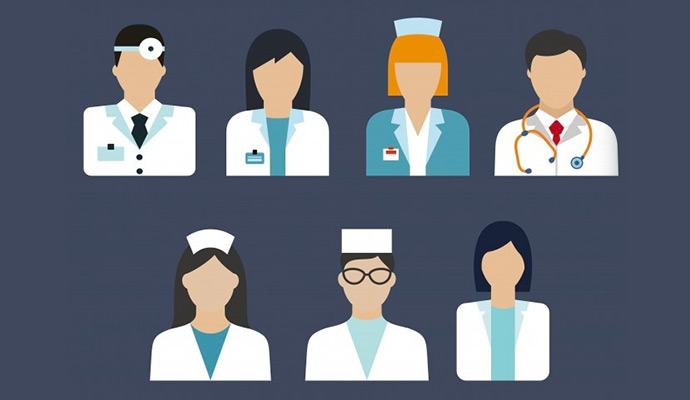Staffing Shortages Increasingly Impacting Healthcare Industry
Data continues to show staffing shortages are becoming the norm across the continuum of care.

Source: Getty Images
- The coming winter could prove calamitous for the healthcare industry due to a perfect storm of staffing shortages, COVID-19, and flu season. Clearly, more relief and mitigation efforts are necessary.
Staffing Shortages Plaguing Nursing Homes, Assisted Living Facilities
The majority of nursing homes and assisted living facilities are facing staffing shortages and say that their workforce situation has gotten worse in 2021, according to a survey from the American Health Care Association and National Center for Assisted Living (AHCA/NCAL).
When asked if their organization’s overall workforce situation has gotten better or worse, 86 percent of nursing homes and 77 percent of assisted living facilities responded with “somewhat worse” or “much worse.”
More than half of nursing homes (59 percent) reported that they were facing high-level staffing shortages, with 30 percent experiencing moderate-level shortages. More than half of assisted living facilities are experiencing moderate-level staffing shortages and 30 percent are facing high-level shortages. Less than 20 percent of nursing homes and assisted living facilities are facing staff shortages at a low level, while fewer than 5 percent report that they are fully staffed. READ MORE
Remdesivir Highly Effective at Reducing COVID-19 Hospitalizations
Gilead recently announced that a three-day course of its COVID-19 treatment, remdesivir, elicited an 87 percent reduction in risk for the composite primary endpoint of COVID-19-related hospitalization or all-cause death by Day 28.
In the Phase 3 trial, researchers randomly assigned 562 participants to receive remdesivir or placebo. Remdesivir elicited an 81 percent reduction in risk for the composite secondary endpoint of medical visits due to COVID-19 or all-cause death by Day 28 compared to placebo.
“Last summer, data from clinical trials demonstrated the benefit of remdesivir in patients hospitalized with COVID-19, even when not yet requiring oxygen. These latest data show remdesivir’s potential to help high-risk patients recover before they get sicker and stay out of the hospital altogether,” said Robert L. Gottlieb, MD, PhD, cardiologist and principal investigator at Baylor University Medical Center and Baylor Scott & White Research Institute. READ MORE
Telehealth Might Be the Perfect Tool for Addiction Recovery
The University of Alabama at Birmingham's Addiction Recovery Program is one of many across the country that has turned to telehealth to treat patients and their families during the pandemic. And they're seeing good results with a virtual platform.
At UAB, providers in the UAB Medicine Addiction Recovery Program (ARP) turned to Zoom to continue personalized and group treatment and support programs, helping both patients and their families access virtual care and resources.
“We look for those signals to assess the level at which anyone is committed to recovery. We might have someone who wears certain clothing, such as a hoodie, to hide reactions, or may not look directly into a camera in the early stages. As they became more open and stop those behaviors, we can measure that progress. All of those small details were advantages we didn’t know videoconferencing would provide when we first decided to use it,” said ARP Director Bronwyn McInturff, MSW. READ MORE
Physician Assistants Have the Potential to Improve Care Access, Patient Satisfaction
Physician assistants (PAs) are effective at expanding patient care access because of their extensive science and medical model training, poising them to drive high patient satisfaction.
In her over 30 years as a physician assistant (PA), Dawn Morton-Rias, Ed.D, PA-C, has never had a patient decline her services and ask for a physician, although she’s sure to always make clear she isn’t one. That’s because PAs tend to generate high patient satisfaction and help patients get appointments sooner, making the case for PAs to meeting patient care access needs.
“We speak very freely about who we are, what our role is, and how we complement the entire healthcare system by making healthcare accessible to more than 9.9 million patients a year. That's a tremendous number of patients that are seen by PAs throughout the course of a year, and it works out well,” she tells PatientEngagementHIT. READ MORE
UPMC Pilots Meal Delivery Service Around Chronic Disease Management
The University of Pittsburgh Medical Center (UPMC) Health Plan partnered with a meal delivery service to improve patient outcomes, decrease healthcare costs, and reduce emergency department visits for Medicaid beneficiaries.
UPMC Health Plan’s Medicaid program, UPMC for You, and Mom’s Meals launched a pilot program to provide home-delivered meals to 100 Medicaid beneficiaries. The members received three meals per day for 13 weeks between October 2019 and June 2020.
The participants saw significant improvements in health outcomes and healthcare costs. During the six months after the meal service was over, patients saw a 31 percent decrease in emergency department use and a 36 percent decrease in median total healthcare costs. For comparison, a separate control group only saw a 17 percent decrease in ED use and an 18 percent reduction in healthcare costs, due to factors related to the pandemic. READ MORE
Using Natural Language Processing for Disease Diagnostics
A recent study by Kaiser Permanente demonstrated the value of natural language processing (NLP) technology with clinicians identifying more than 50,000 patients with previously undiagnosed cases of aortic stenosis, a common heart disease.
Researchers trained the NLP to sort through over a million electronic medical records (EMR) and echocardiogram reports to identify certain abbreviations, works, and phrases associated with aortic stenosis. Within minutes, the software recognized nearly 54,000 patients with the conditions, a process that would have likely taken years for physicians to perform manually.
“It was a magical moment when we were able to apply our developed and validated algorithms on our entire population and to then identify our large cohort of patients with aortic stenosis,” said Matthew Solomon, MD, a cardiologist at The Permanente Medical Group and a physician researcher at the Kaiser Permanente Division of Research in Oakland, California. READ MORE
